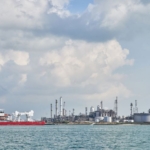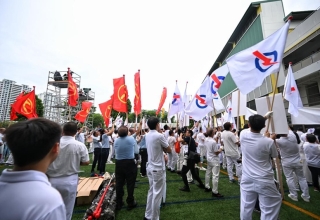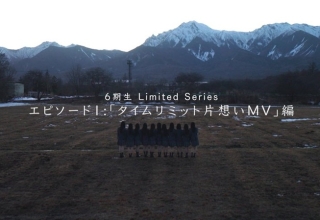
Singapore, a city-state with a knack for diplomatic finesse, now finds itself in an intricate dance between superpowers. China, its biggest trade partner, hungers for Russian oil, while the United States, its leading foreign investor, wants to cut Moscow’s cash flow. Singapore’s strategy? Impose its sanctions on Russia’s banks and arms deals while giving its local oil industry the wiggle room to navigate Western restrictions.
Singapore’s unique tightrope act calls for balance. It’s like walking a fine line in the circus of international relations, and the stakes are sky-high.
The city-state’s bilingual policy embodies its delicate balancing act. English and Mandarin share the spotlight as official languages. The American and Chinese embassies peacefully coexist near the bustling shopping district. In defense, Singapore hosts U.S. warships while granting China’s navy access to its ports. It’s a diplomatic ballet, but the most challenging performance takes place in the energy arena, where Singapore must keep both the U.S. and China content.
How Singapore Became a Powerhouse
Singapore has the world’s attention due to the sheer scale and diversity of nations participating in its energy trade. The city-state isn’t just a hub for physical oil; it’s where countless energy deals take shape. Oil can change hands here without ever crossing Singapore’s waters. Big global commodities traders like Glencore and Trafigura have a substantial presence, as do Sinopec and PetroChina, acting as crucial conduits for meeting Beijing’s energy demands.
The covert world of the dark fleet introduces an element of risk into this high-wire act. As we step into the corporate corridors of Suntec City’s gleaming towers, a somber mood pervades. Singapore had enticed Chinese crude traders to its shores over a decade ago with enticing tax incentives. However, in March 2022, Singapore imposed unilateral military and financial sanctions on Russia in response to the Ukraine crisis, causing concerns about taking sides.
Keep Reading
While the U.S. and EU embarked on talks to cap oil prices, Singapore-based traders of Chinese companies began exploring rival hubs like Hong Kong and Dubai, where business with Russia faced fewer restrictions. Yet, it was evident that many nations, including China and India, wouldn’t join this effort. Companies had to navigate these new waters on their own when the cap came into effect in December 2022.
Singapore-based traders got creative, often using subsidiaries in different jurisdictions to conduct business with Russia. In other corners of the industry, merchants deployed age-old shipping and logistical workarounds to deal with sensitive oil.
However, this reliance on the dark fleet isn’t without risks. Incidents like the Pablo explosion highlight the potential safety hazards posed by these aging vessels. They’re pushing the limits of their intended life spans, employing questionable safety practices, and often disabling tracking systems to operate covertly. Singapore, in response, has increased detentions of oil and chemical tankers to mitigate these risks.
The story of Singapore’s delicate diplomacy in the world of global energy trade is a unique tale, a dance where a city-state navigates the turbulent waters between two superpowers while managing the covert dealings of the dark fleet. In this ever-shifting geopolitical landscape, Singapore remains the master of its domain, a tightrope walker with no safety net, ensuring the show goes on.

























